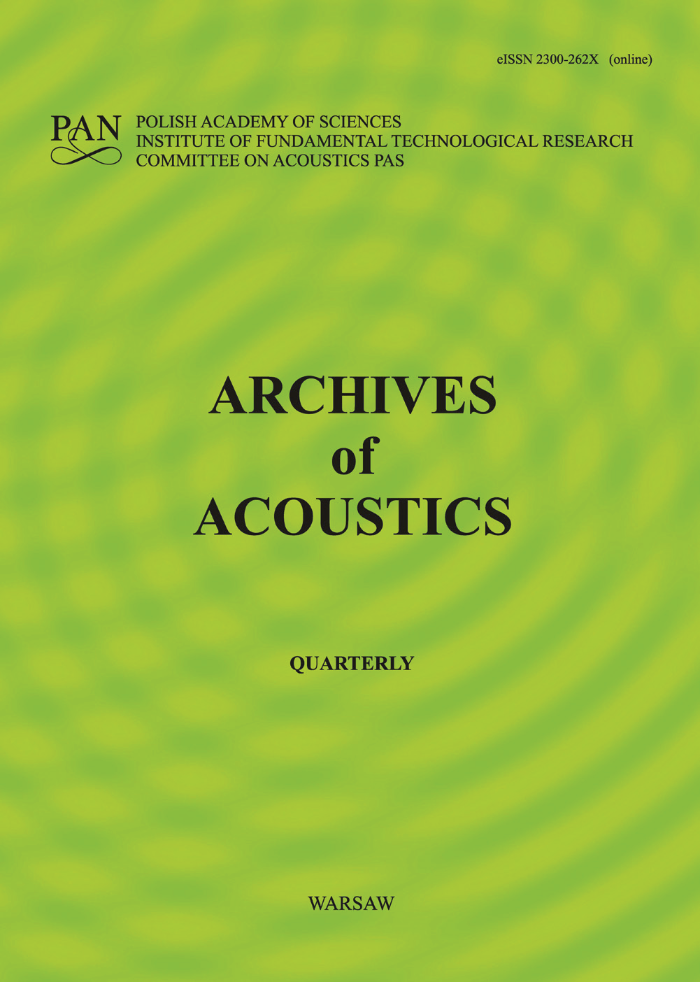Most read articles by the same author(s)
- A. P. SĘK, Auditory filtering at low frequencies , Archives of Acoustics: Vol. 25 No. 3 (2000)
- E. B. Skrodzka, A. P. Sęk, Application of BEM to modelling loudspeaker's directivity patterns based on its dynamic behaviour , Archives of Acoustics: Vol. 26 No. 2 (2001)
- J. Lemańska, A. P. Sęk, E. B. Skrodzka, Discrimination of the amplitude modulation rate , Archives of Acoustics: Vol. 27 No. 1 (2002)
- E. B. Skrodzka, A. Wicher, E. Ozimek, A. P. Sęk, Auditory filters in sensorineural hearing impaired subjects , Archives of Acoustics: Vol. 27 No. 3 (2002)
- W. Rybicka, A. Sęk, Detection of the amplitude modulation for modulating signals characterised by different crest factors , Archives of Acoustics: Vol. 28 No. 4 (2003)
- D. Kutzner, J. Lemańska, A. P. Sęk, Detection of asynchronicity in the amplitude modulation domain , Archives of Acoustics: Vol. 30 No. 3 (2005)
- A. P. SĘK, Detection and discrimination of modulation type at low modulation rates , Archives of Acoustics: Vol. 23 No. 3 (1998)
- A. P. SĘK, E. B. SKRODZKA, Tuning in the amplitude modulation rate domain , Archives of Acoustics: Vol. 23 No. 4 (1998)
- A. P. SĘK, E. B. SKRODZKA, An influence of a modulating signal starting phase on the modulation detection , Archives of Acoustics: Vol. 24 No. 1 (1999)


